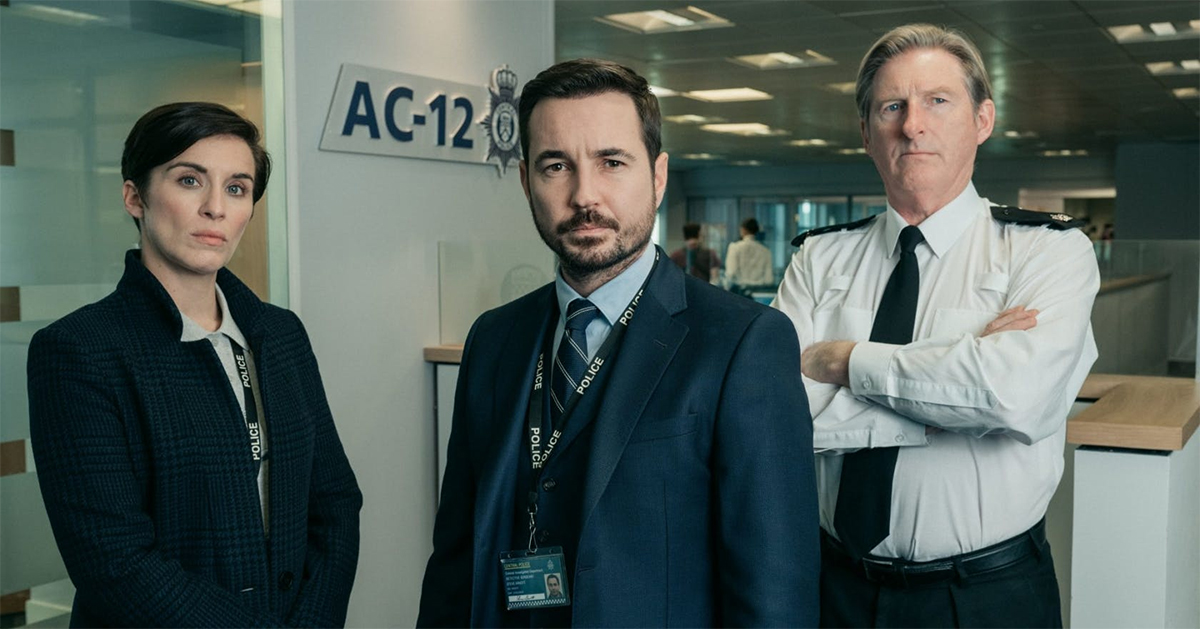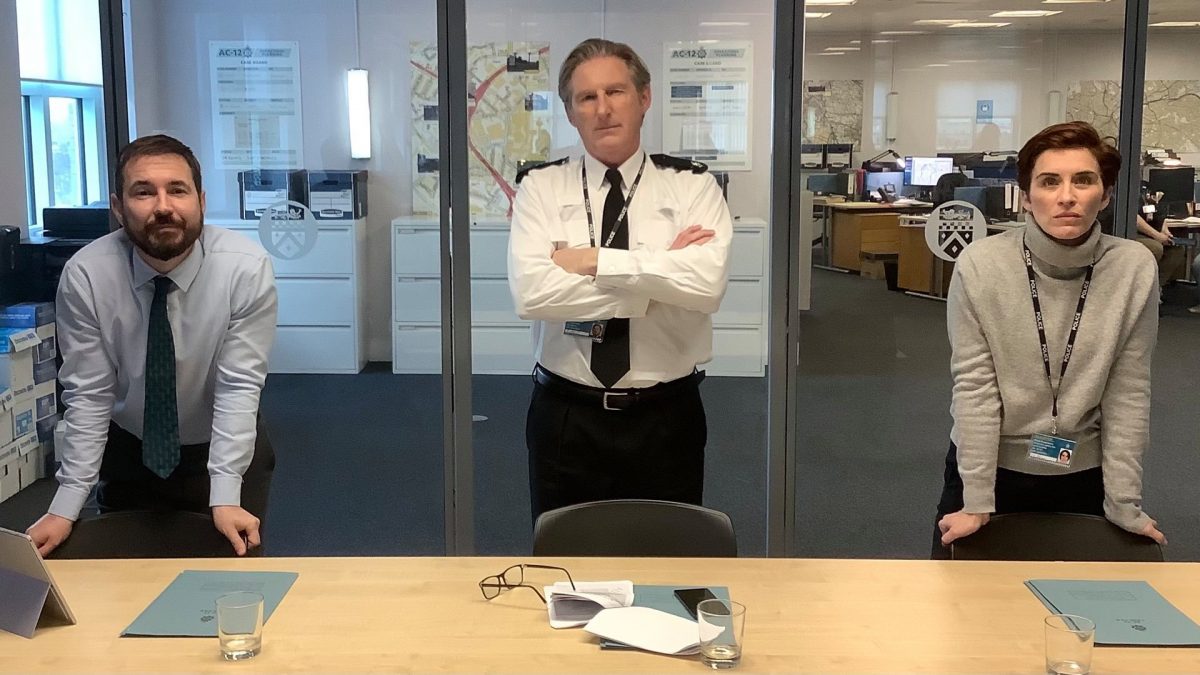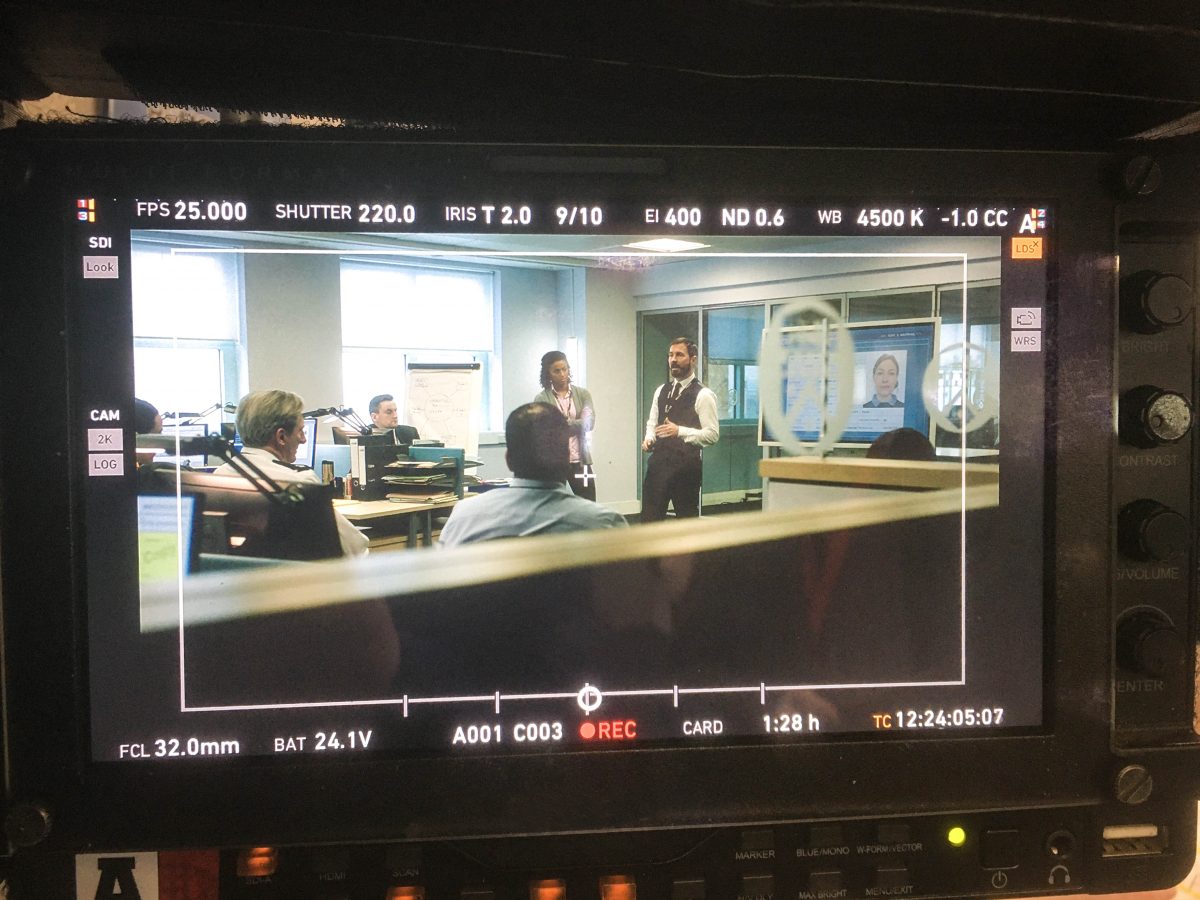Line of Duty’s fifth season was shot by Stephen Murphy and he described a show bolstered by its insistence on reality, especially in the AC-12 incident room. “It’s not supposed to be a glamorous style–it’s not glossy; it’s a beautifully imperfect semi-naturalistic style,” he says of the show’s aesthetic. The new season was to be shot in a similar vein with Tim Palmer, BSC, taking over cinematographer duties; but this article is less about the look of the new season than how they managed to shoot it at all.
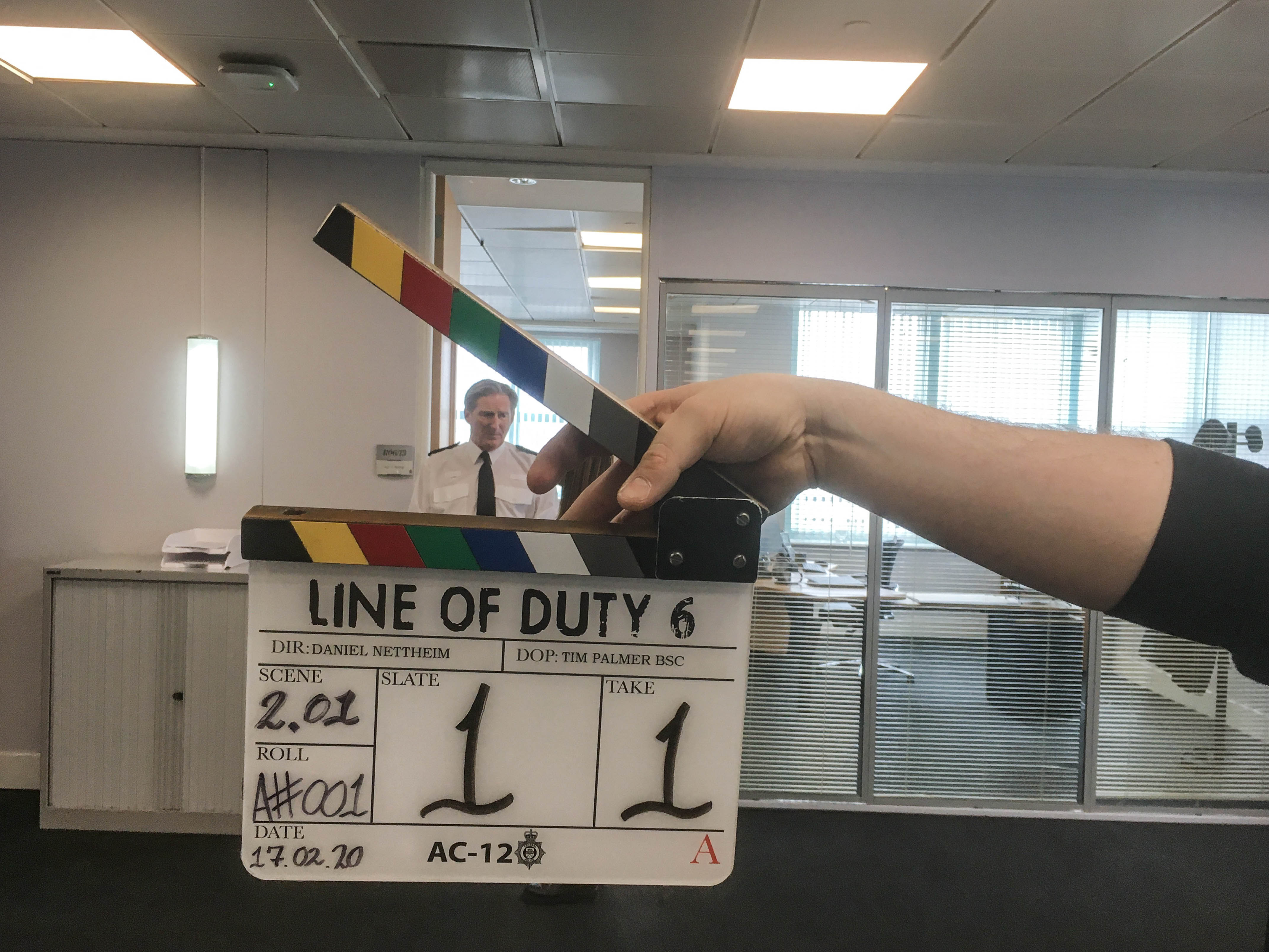
Season 6 stopped nearly as soon as it started back in mid-February 2020 (lockdown began in the middle of March if anyone needs reminding,) the original idea being that it would shoot and complete in time for a Christmas 2020 release; it is, after all, one of the BBC’s treasures, but it also sells very well internationally.
The decision to come back was made on the back of the show’s value to the corporation but was cemented when the UK government announced that it would underwrite the insurance bond by creating a restart scheme for productions that could be back-dated to July. Initially it wasn’t obvious how productions would apply for the scheme until all was made clear in mid-October.
Palmer explains how significant the scheme was for UK production: “You could restart your show — nobody knew what would happen if, for instance, an actor got COVID-19 as there wouldn’t be any insurance available.”


Larger productions backed by studio money were able to self-insure, but most productions were left to delay until the government stepped in. The announcement of the restart scheme was the starting gun for the new season but came with a whole lot of new work guidelines. Palmer heard the news from Ken Horn, the producer. “As the situation became clear with social distancing and how life on a set can work, we started to formulate some kind of loose plan very early on as to how filming could occur if the time came that we were allowed to start again,” he says. Everything hinged on social distancing and Palmer started to work out ways of running the floor camera wise in a way that would allow that distancing. “I had to do that and retain the creative values of the show,” Palmer adds. Directors included Daniel Nettheim up to the shutdown, then Gareth Bryn and Jennie Darnell from the re-start.
Stephen Murphy had taken advantage of the time before Palmer started on season 6, as Line of Duty is more of a long lens show and therefore had a natural distance advantage over, say, a wide-angle setup. “There are a lot of scenes that have people looking at each other without saying anything and you have to capture all those looks; scenically they were quite far away as people were spaced apart within the precinct,” Palmer notes. That was an early win for the crew, as the cameras and crew could be remoted with the aesthetic rules of the shoot intact. But that was only a small part of it, as a whole a different approach was needed to keep that distance for all the setups.
“In many ways it was quicker–far fewer people on-set definitely helped with that as that meant less people coming in and making adjustments.”
— Tim Palmer, BSC
Palmer subsequently put forward two proposals that were adopted. One was that the original idea to shoot on Zeiss Ultra Prime lenses had to be forgotten as you couldn’t have focus pullers coming on set between every shot and changing a lens and then having to sterilize the camera at the same time while the operator distanced themselves. They changed to zooms. “That change had several advantages: First of all you can quickly change your shot size, you can re-frame in shot if you want to and we also set up a comms system so the camera operators, DOP and director were on a talkback system,” he says.
The style of show depends on long takes and an establishing sequence might be on a 24mm lens for 10 seconds or so. Having the talkback allowed the director to ask the operator to hold on, say, the 24 and to punch in a 35mm length, then maybe up to an 85mm. “As long as the sound department were ready and adaptable to that, which they were, it enabled you to get three shots in one take, which in normal times you would have spent triple the amount of time shooting. You would’ve had to change lenses twice and run the whole scene,” says Palmer.

For sure it’s a different approach as sometimes directors want to run a whole scene, but Palmer say they also enjoyed the experiment and maybe gained a shot size that they didn’t realize worked. The zooms were slower, of course, which wasn’t a huge problem as Palmer would be able to light to the zoom stop even on night exteriors. And they only needed four lenses for the whole show between two Alexa Mini cameras: a wide zoom (15-40 Angenieux), medium (28-76 Angenieux) and a medium-long zoom (45-120 Angenieux). They were matching zooms, all the same size and weight so the grip didn’t need to re-balance the camera on Steadicam, for instance. On the “B” camera, Palmer had 45-250 Alura zoom which he said “did everything and never needed to come off the camera.”
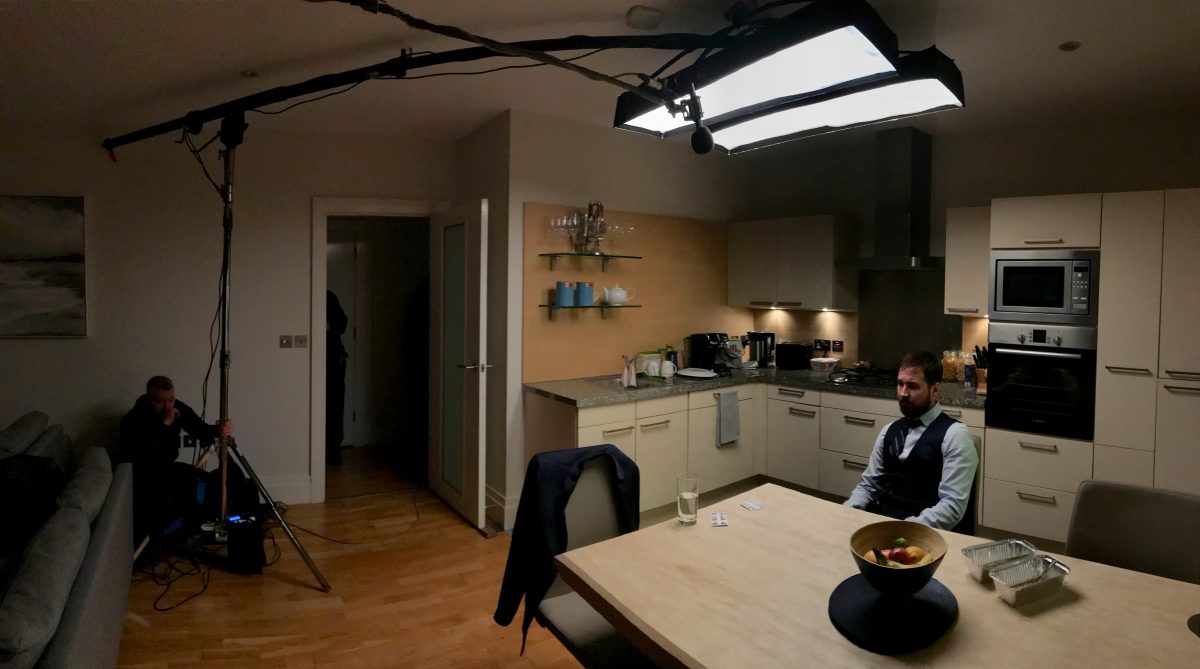
The second change was to work off remote heads as much as possible. Palmer explains why this is a good measure for COVID compliance: “It takes the operator and the grip out of the equation or at least it can put the grip further away but just keeps fewer people on-set away from the actors. It worked very well; we had a remote head already as part of the package for the ‘A’ camera and the ‘B’ camera was on longer lenses so further away. When we got into the interview scenes, which is a key part of filming Line of Duty, we got an additional remote head in so ‘A’ and ‘B’ cameras could both be on remote heads for those long takes because they’re very close to the actors.” Those shots have always been very close to the eye line or over the shoulder shots.
The COVID rule for distancing was six feet and 15 minutes, which is quite general but on a film set can be very significant if someone you’re working with tests positive: You are considered a close contact and therefore have to isolate for 14 days if you have been exposed to an infected person within that time and from that distance within a day’s shooting. The actors and crew adhered to the rule rigidly for the first two weeks and for all the interview scenes, but then introduced perspex screens between operators and actors. “When that wasn’t possible and this was accepted by the COVID supervisor, we shrouded the operator with heavy plastic so he was covered up. For example, we had a scene in a moving van and it had to be handheld and the operator had to be in the van close to the actors. He covered himself up completely; all you could see was this camera lens pointing out of this black shroud. That was considered a safe way of working,” Palmer explains.
Both new methods of shooting worked really well and Palmer is sure that when you see the finished result you won’t think it was shot in any different way: It blended seamlessly with what was shot before lockdown. Ironically, using remote heads became a way of working that he really enjoyed as you can get the camera into places that you usually can’t. “Sometimes it’s tricky when you have the operator and the bulk of the Dolly, where with a Hot head you can sneak right in there and be very inconspicuous and get shots that you perhaps couldn’t have achieved before,” he notes.
The remote camera setup included the “A” camera being on a traditional Aurora head, so that was cabled so the operator would be outside with his wheels and a monitor. When the “B” camera was on a remote head and Palmer was operating that, grip Glyn Harrison had his own DJI Ronin 2 as a remote head with master wheels. Being wireless it was very quick to set up, and Palmer ended up using it a lot.
“Being on lockdown we had a lot of shots in the main AC-12 incident room and there were some nice moments where we could do some great shots where we track through the incident room and into Hastings’ office,” the cinematographer recounts. “You couldn’t do that on Steadicam because the door wasn’t quite wide enough and also if you wanted to develop it in to a longer master shot of a scene, a Steadicam isn’t as effective when you have to hold a shot for a minute or two afterwards as you also get that little bit of wobble. Also you can’t get the right height either; high mode and you’re a bit too high, low mode and you’re a bit too low. All those Line of Duty scenes are always table top height, which is an awkward height for a Steadicam.” Palmer put the Ronin 2 on the Dolly and just tracked it around the desks fast and then settled on a well-composed master shot that would carry the rest of the scene.
“As the situation became clear with social distancing and how life on a set can work, we started to formulate some kind of loose plan very early on as to how filming could occur if the time came that we were allowed to start again.”
— Tim Palmer, BSC
With the new methodology for COVID measures, you might think that the schedule shrunk but according to Palmer that ultimately wasn’t the case. “In many ways it was quicker — far fewer people on-set definitely helped with that as that meant less people coming in and making adjustments. Also ‘going again’ is time consuming for all the COVID reasons, you’re striving to do it in one take, maybe two. But we stuck to the schedule and it was a pretty smooth experience,” he says.
“The only COVID situation where you really felt the restrictions and limitations were on a few of the very small sets. Small office sets, little interview rooms and where people are watching on small monitors. In those situations you can only have one person going in and only one person going out. So for anything that needed to be adjusted or changed, everyone had to go out and that one person had to go in and do the adjustments and so on.”
Line of Duty Season 6 finally finished production in late November, and starts airing on March 21.


